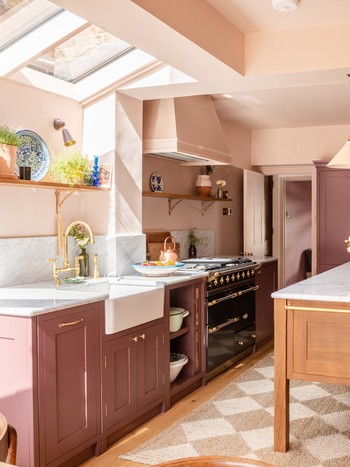Vital Elements to Consider When Selecting Legs For Cooking Area Island
Choosing the appropriate legs for a kitchen area island involves a cautious analysis of multiple aspects that can significantly affect both functionality and aesthetic appeal. As we discover these aspects, it ends up being clear that each choice can have far-ranging ramifications for the general kitchen area experience.
Material Options
When picking legs for a cooking area island, recognizing the different material choices is necessary for attaining both visual appeal and architectural integrity (Legs For Kitchen Island). The selection of material considerably affects not only the sturdiness of the island however also its overall design and performance
Steel legs, usually made from stainless steel or functioned iron, add a industrial and contemporary feel while ensuring resilience and stability. These products are immune to put on and can sustain considerable weight, making them optimal for larger islands.
Another alternative is crafted products, like MDF or plywood, which can be much more affordable while still providing a series of coatings. However, they may not give the very same level of stability as solid wood or steel. Products such as acrylic or glass can produce a contemporary appearance, though they may call for extra support to make certain stability.
Ultimately, the choice of material for cooking area island legs ought to line up with the desired functionality and the total theme of the cooking area.
Design And Style

When considering style, the shape and finish of the legs are crucial. Tapered legs can offer a sense of lightness and beauty, while thicker, much more robust legs can convey strength and stability. Additionally, the finish-- be it repainted, tarnished, or all-natural-- need to enhance the kitchen cabinetry and counter top materials to produce a unified look.
Moreover, the design of the legs can additionally mirror individual taste. Customized or decorative legs, such as those featuring detailed makings or special geometric shapes, can act as centerpieces, adding personality and character to the kitchen area. Ultimately, the right selection will certainly not only enhance capability however also elevate the visual allure, making the kitchen island a standout attribute of the home.
Height Considerations
Picking the proper height for cooking area island legs is vital, as it directly impacts both capability and comfort. The standard elevation for a kitchen area island typically varies from 36 to 42 inches, aligning with usual counter top heights. A 36-inch height is ideal for cooking and cooking, permitting comfortable use kitchen area devices and tools. Alternatively, a height of 42 inches is often liked for islands intended for bar seating, suiting taller stools and supplying a laid-back eating experience.

It is likewise necessary to account for users' elevations and preferences. Customizing the elevation can guarantee a comfortable experience for all member of the family, making the cooking area island a much more functional and delightful area.
Weight Support
Making sure sufficient weight assistance for kitchen island legs is essential for both security and functionality. The kitchen area island often offers multiple functions, consisting of food preparation, eating, and extra storage space, necessitating a durable assistance structure. When selecting legs, it is vital to consider the general weight capacity needed based upon the island's intended use and the products that will be positioned on it.
The selection of material for the legs plays a Get More Info considerable duty in their weight-bearing capabilities. Strong timber, metal, and durable compounds generally offer premium strength compared to lighter materials. In addition, the design of the legs-- whether they are straight, tapered, or have a pedestal type-- can affect their capacity to distribute weight efficiently throughout the framework.
Constantly consult the producer's specs relating to tons limits to ensure that the legs can sustain the intended weight without jeopardizing security. In summary, selecting kitchen island legs with adequate weight assistance is crucial for creating a secure and useful culinary room.
Installment and Maintenance
Proper installation and upkeep of cooking area island legs are critical for making certain long life and stability. To begin, it is necessary to adhere to the maker's guidelines throughout setup. This frequently entails safeguarding the best site legs to the island base using proper fasteners, ensuring that the legs are degree and aligned. Making use of a level device can assist protect against wobbling and enhance the overall visual appeal of the kitchen island.
Once set up, normal maintenance is essential to preserve the honesty and look of the legs - Legs For Kitchen Island. For wooden legs, periodic cleaning with a wet towel and application of ideal wood polish can protect against wetness damages and keep their finish. Steel legs might require a gentle cleansing solution to eliminate oil and crud, followed by a dry towel to prevent rust development
Additionally, check the legs regularly for signs of wear or damage, such as cracks or loose joints. Tightening screws or bolts as needed can likewise extend the life expectancy of the legs. By sticking to these setup and upkeep methods, house owners can make certain that their cooking area island continues to be tough and aesthetically appealing for several years ahead.
Verdict

Aesthetic comprehensibility is extremely important in picking the style and design of legs for a kitchen area island, as these aspects considerably affect the total ambiance of the space. Tapered legs can offer a sense of lightness and beauty, while thicker, a lot more durable legs can share toughness and security.Picking the ideal elevation for cooking area island legs is crucial, as it directly impacts both functionality and comfort. In recap, picking cooking area island legs with adequate weight assistance is essential for creating a useful and secure cooking area.
In final thought, choosing legs for a kitchen island necessitates careful factor to consider of numerous aspects, consisting find out here now of material options, design, elevation, weight support, and installation.